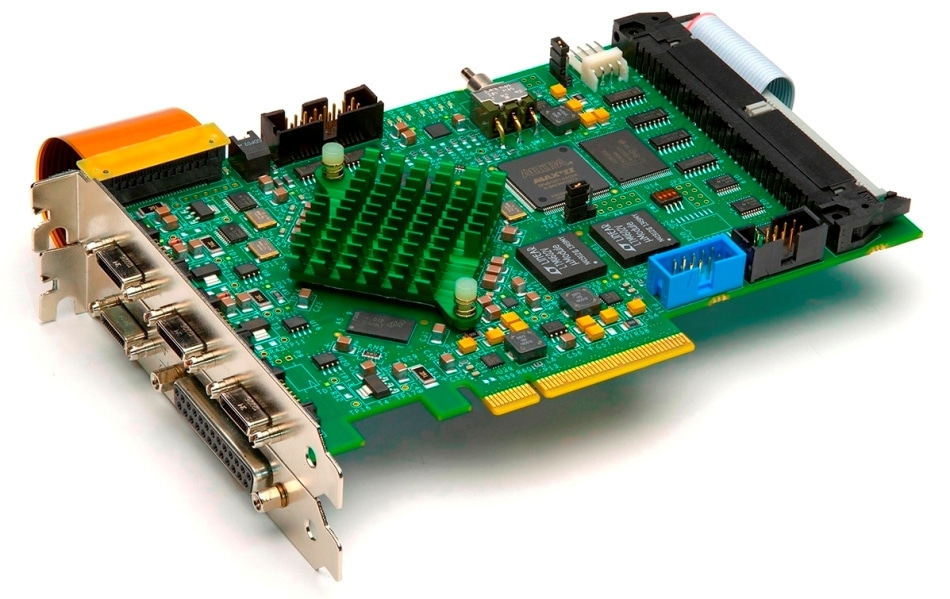The Camera Link (CL) specification has been a staple of the machine vision industry for several decades and remains one of the simplest, most efficient, and least expensive ways to get large amounts of camera data into a computer. In addition, CL systems benefit from "plug-n-play" compatibility with thousands of cameras and other equipment sold worldwide, reducing development and validation costs.

To capitalize on CL's continued market strength, BitFlow offers frame grabber models that its customers can use to control up to four CL Base or two CL 80-bit cameras from one PCIe slot on the motherboard, representing a simple, cost-effective answer for multi-camera inspection systems. Since its founding in 1993 BitFlow has been one of the only frame grabber manufacturers in the world to continuously offer multi-camera machine vision solutions.
NEON-CLD
Over a decade ago BitFlow followed on their multi camera Karbon CL solution with a dedicated dual CL Base frame grabber. The Neon CLD is a PoCL (Power over Camera Link) frame grabber that supports two CL cameras on a low-cost x4 PCIe platform. This frame grabber has been the choice of multi linescan camera systems worldwide since then.
NEON-CLQ
In 2010, BitFlow followed up with the Neon-CLQ. While the Neon-CLD was recognized as a breakthrough in price/perfomance for multi-camera systems, the Neon-CLQ pushed the envelope even further by supporting four base cameras plus I/O in a single PCIe slot. Since it is built on the same x4 PCIe platform as the Neon CLD, there was little risk or development time required to move to the four camera Neon. Cost per camera for the Neon-CLQ was demonstrated to be much lower than anything else available on the market. In fact, a Neon-CLQ four camera system competes dollar-for-dollar with networked cameras yet provides the robust industrial features of a frame grabber.
AXION-CL
The Axion-CL, the most powerful CL frame grabber BitFlow has ever manufactured, was introduced in 2015 and represented the culmination of the company's vast Camera Link expertise. Exceptionally versatile, the dual 80-bit version (Axion 2xE) permits an individual trigger signal from each of two connected CL cameras with a strobe output signal generated for each trigger, or a single trigger to control acquisition from two CL cameras simultanuously. Interfacing with a PCIe Gen 2 x4 platform, the Axion-CL frame grabber will fit into not only x16 and x8 slots, but also x4 and x1 slots that use x16 connectors.
The Axion-CL family (Axion 1xE and 2xE) doesn't sacrifice acquisition speed for lower costs or lost pixels. It captures images at rates up to 85MHz with support for two base, medium and full 80-bit (10-tap) CL cameras at a combined sustained bandwidth up to 1.7 GB/S. In dual camera mode, the Axion 2xE board appears in application software to be two completely independent frame grabbers, greatly simplifying camera setup. For additional versatility, a wide variety of I/O signals can be routed from internal and external destinations, along with separate hardware I/O signals that can be connected to/from external sources. Also, each of the cameras can be run synchronized or independently.
SIMPLE INTEGRATION
Users can simplify the development of custom on-board image processing using the BitFlow SDK. Drivers are also available for interfacing with Cognex VisionPro, MathWorks Matlab, MVTec Halcon, National Instruments LabView, and Norpix StreamPix.